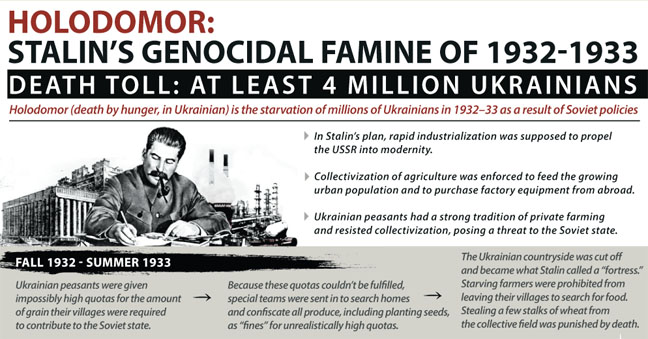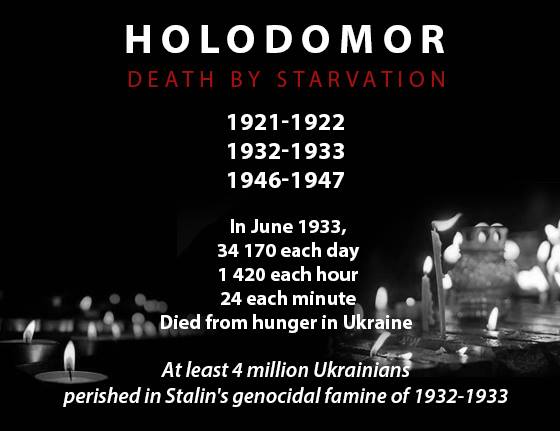The Syvak family
Ksenia Prokopiuk was born on January 31, 1927, in Tanske village of Uman district. Her father, Hyva Syvak, was a blacksmith. He could shoe a horse or make the necessary agricultural tools, and had his own small smithy. Ksenia’s mother Paraska was taking care of the home farm, since Syvaks had some land. “Wherever you see, there was a farmed field,” Ksenia recalls of that time. Also, the family kept a horse and a cow.
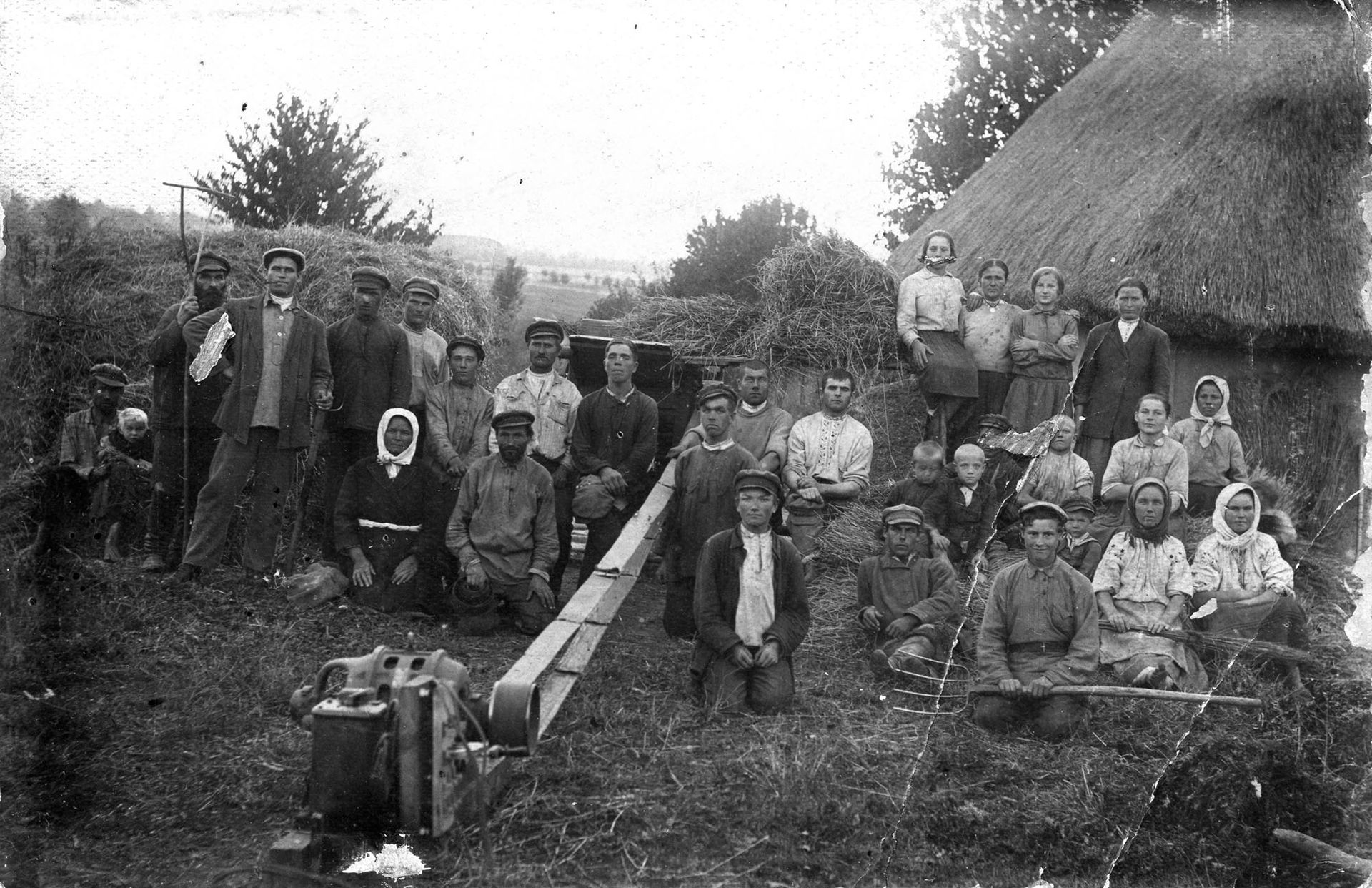
“And they took everything away from everyone”
In 1932, when Ksenia was only five years old, in her village Tanske, as well as throughout Ukraine, official food searches started in accordance with the instructions of the higher authorities of the USSR. They had only one aim, which was to take away all the food products from Ukrainians and doom them to starvation. This robbery was done by groups of Soviet officials and "aktivisty" (collaborators from local rural population and sent from cities). It is also noteworthy that none of the residents of Tanske who joined these groups died of starvation. “They did not starve… These aktivisty who were close to the [Communist] Party. I know there was the head of the village council... and his whole family survived. There were about ten of them, and they all survived,” the witness recalls. The searches and confiscation of all food created the conditions for destruction of the Ukrainian nation. Also, the genocide became possible through such mechanisms as “black boards,” the “Five Ears of Grain Law,” the prohibition to leave the Ukrainian SSR, the restrictive internal passport system, and the so-called "grain procurement campaign." A cousin of Ksenia’s father also joined the communist "activists." She compares their experiences: “This one became an 'activist,' and that one was a worker. This one lived in easy street, and that one worked for living.” As a result, the relatives did not talk to each other for the rest of their lives. In this way, the communist regime destroyed the family connections by setting one person against the other.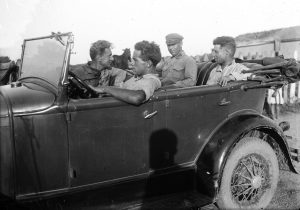
Surrogates
Surrogates, substitutes for normal food, became almost the only salvation for starving people. Among them, Ksenia Prokopiuk remembered the nettles, goosefeet, pilewort and other plants.Once Ksenia’s father found some yellow fodder beets and her mother cooked them.“Those nettles... I remember their taste in my mouth and how I didn’t want to eat them. But you must eat them, because there was nothing else, just some grains of corn. When the cherry trees blossomed, we took the leaves and sap from the cherry trees making “dumplings” from them. We ate blossoms and buds when we found them. The cherry ones are not sour, but the plum ones are. Regardless we ate everything whenever someone found something. When the wild grass appeared, there was one kind with round grains. On the river shore, grass appears earlier, so we went for that grass.”
Ksenia's grandmother Maryna worked at a pig farm and when she could she would steal some oilcake (dross from sunflower oil production, used as animal fodder) in a secret pocket of her skirt for them. She divided the food among her grandchildren equally, everyone receiving a handful. Later in 1933 she died of starvation herself.“We ate them. Oh, my father said, if the children can eat, it means they will survive. We ate them one day, and another day… It was disgusting, the smell of fodder beets. Regular beets are red, tasty and smell nice, while the yellow fodder beets only the cattle eat, but we were still happy to have them.”
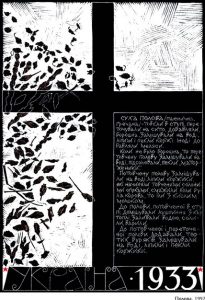
“No one cried, no one was sorry for anyone, they just died and that was all.”
One of Ksenia’s most horrible memories of that time is the death of her youngest brother Mykola, who was just an infant. Despite the family feeding the boy with cow’s milk, they couldn't manage to save him, and the child died in front of everyone. “My mom gave him to me. I held him while they made the bed for him. He started hiccuping and my mother said, ‘Don’t shake him.’ I replied, ‘I'm not shaking him, he has hiccups.’ Then they laid him in bed where he hiccuped one more time and died.” Her parents buried the child on their own, but they didn’t mark the grave.Later Ksenia Prokopiuk many times witnessed the deaths of her relatives and neighbors. For example, once she came to the house of her neighbors the Muzykas to bring them some milk. Their son Dmytro was swollen from starvation, and the parents asked the Syvaks for help. However, the boy couldn’t drink it. Ksenia recalls, “I brought the milk, and he was dressed up laid out dead on the table. I said, ‘I brought the milk for you, why are you lying here?’ and they all looked at me strangely...” Three more people died in this family afterwards. Ksenia’s uncle Andrii Koval also became a victim of the Holodomor. In order to properly bury him, her father Hyva made a coffin. The body remained in his house for three more days since the two men who collected the dead and drove them by horse-pulled cart to the cemetery were too weak to lift the coffin. Mostly the traditional funeral rites were set aside: “They buried the dead without coffins. They dug big pits in the cemetery for those who died and piled the bodies in them. They piled them up until the pit was full.”“They buried that child. My mother and father went to the cemetery and they didn’t take us since we were young. Why take us? We went to the cemetery afterwards. My mother said that he was buried near the fence but they didn’t know where the grave was.”
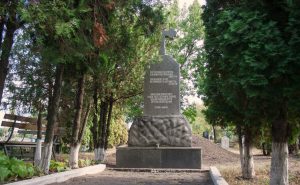
“Maidan”
For the children whose parents died of starvation, the kolkhoz organized a kindergarten named “maidan,” where the orphans were given some food. For some time Ksenia and her younger sister had also been eating there, but it didn’t last long. The management was informed that the family had a cow and so the girls were no longer fed. “We had a cow, it means, they won’t give us any food,” Ksenia Prokopiuk says. Incidentally, the wife of Ksenia’s godfather worked at the “maidan.” She distributed bread for the kids—everyone received 100 grams (3.5 ounces). Once she wanted to give Ksenia a little more than “normal”, and poured her a handful of crumbs. However, the girl was too small to understand this idea and was offended. “When I saw that I got crumbs, while everyone got whole pieces, I threw the crumbs on the ground! She was shocked: ‘What's that? Did you already eat?’ Right away, all other children got on their hands and knees to snatch the crumbs like chickens and I didn’t get anything.” One of Ksenia's family's neighbors also worked there. Although she was a Komsomol communist youth organization member and an aktivist, seeing that Ksenia was very weakened, the woman also tried to help her. “She wanted the best for me—to give me more crumbs of that bread. My father had asked her: ‘Help her as much as you can, she barely eats, maybe you could help her.’” There were some communist "activists" who showed some humanity.History of the church
At first, the Soviets turned the village of Tanske's ancient wooden Church of St. Dmytro into a propaganda and community center (so-called “house of culture”), and then they completely dismantled in 1940. Earlier, during the Holodomor, the building was set on fire (“People said the fire was set by Communist Party members,” recalls Ksenia), but the inhabitants of the village managed to extinguish it. Communist aktivisty treated the local priest cruelly. He was locked until he died in the basement of the village council, which was located in the house of a "dekulakized" family. “No one could find him there, they covered him up with garbage, and that's it,” Ksenia recalls. During the German occupation, the priest’s son, who was also a priest, returned to Tanske and conducted religious services in the premises converted back into a church. When the communists returned to Tanske, a large tax was imposed on him, and he had to leave the village forever.Famine of 1946-1947. Trip to Belarus.
The next life challenge for Ksenia was the mass terror-famine of 1946-1947 when she was already nineteen years old. At the time, the decree of August 7, 1932, known as the "Five Ears of Grain Law," was still in force. It forbade anyone from picking up even small remnants of the harvest from the collective farm fields. That's why several Tanske residents were imprisoned. “One woman, she took seven beets left in the field after harvesting, and they gave her a seven-year prison term. And the neighbor, who took three or four hundred grams (10-15 ounces) of barley in her pocket, got four years.”
Propaganda
The propaganda of the communist regime always promised Ukrainians a happy life and the construction of a “new order.” In contrast, it brought destruction, arrests, famine, and mass death. And although some believed the loud propaganda slogans, most did not accept the Bolshevik “innovations.”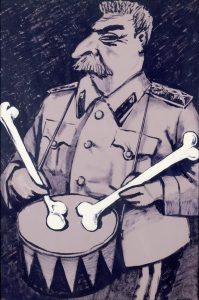
Further reading:
- Half our village died of starvation, mostly the elderly | Voices of Holodomor witnesses
- My neighbor buried her three children | Voices of Holodomor witnesses
- Every day two or three people died in our village | Voices of Holodomor witnesses
- My village once saw twelve people die of hunger in one day | Voices of Holodomor witnesses
- My family survived Holodomor by eating waste left from sugar production | Voices of witnesses
- Surviving in the “collective farm paradise”: voices of living Holodomor witnesses
- How my father saved his co-villagers from starvation during the Holodomor
- My neighbors escaped starvation by eating grain stored by field mice | Voices of Holodomor witnesses
- “Let me take the wife too, when I reach the cemetery she will be dead.” Stories of Holodomor survivors
- Stalin’s management of Red Army proves Holodomor a Soviet genocide against Ukrainians
- Holodomor in Kharkiv through the lens of Austrian engineer: photo gallery
- Holodomor: Stalin’s punishment for 5,000 peasant revolts



